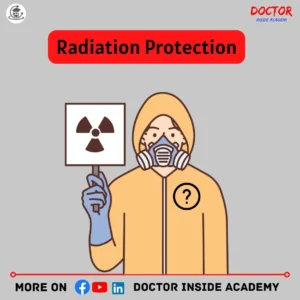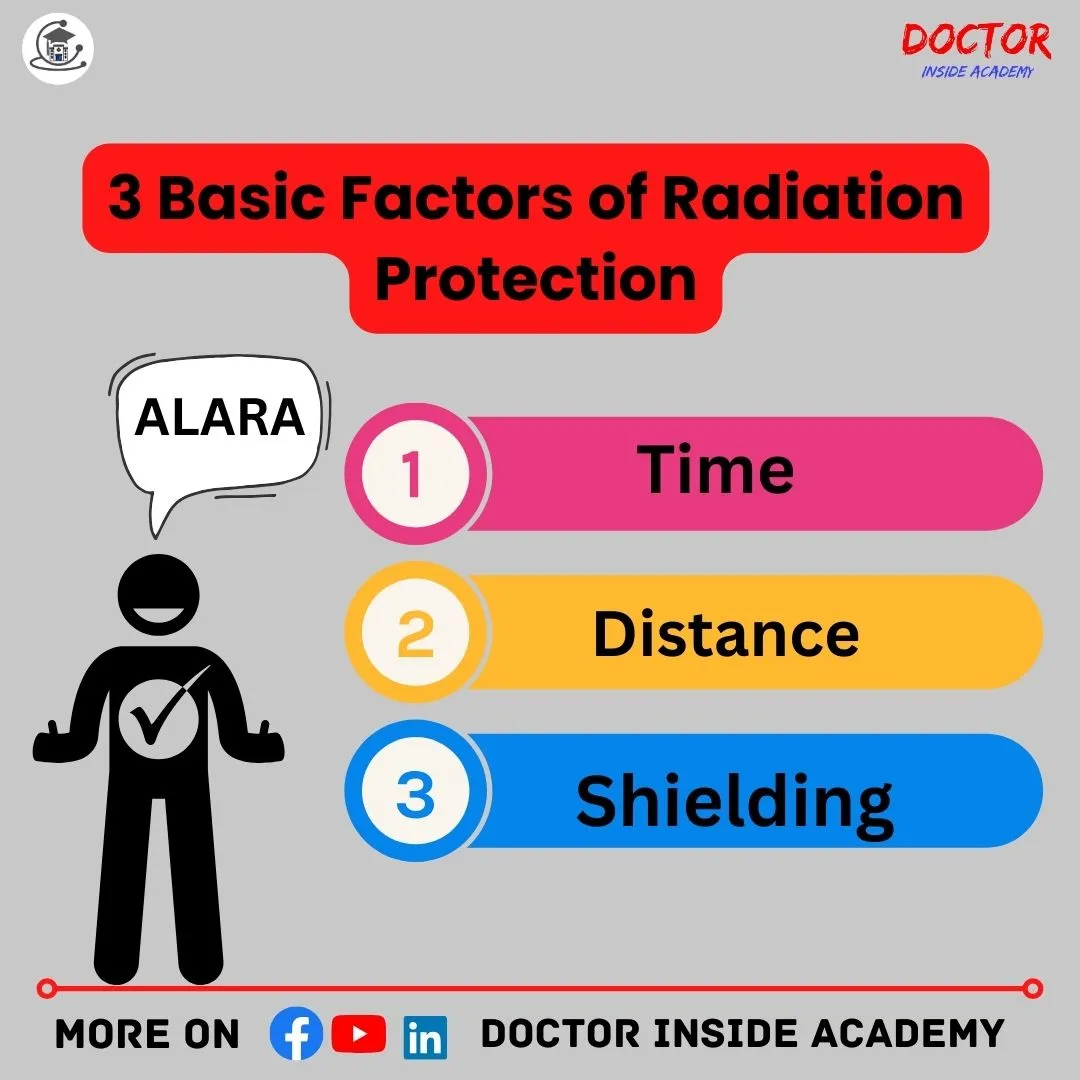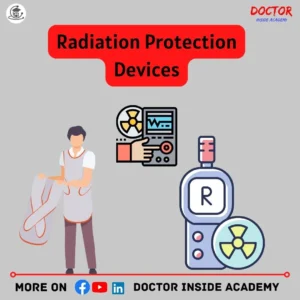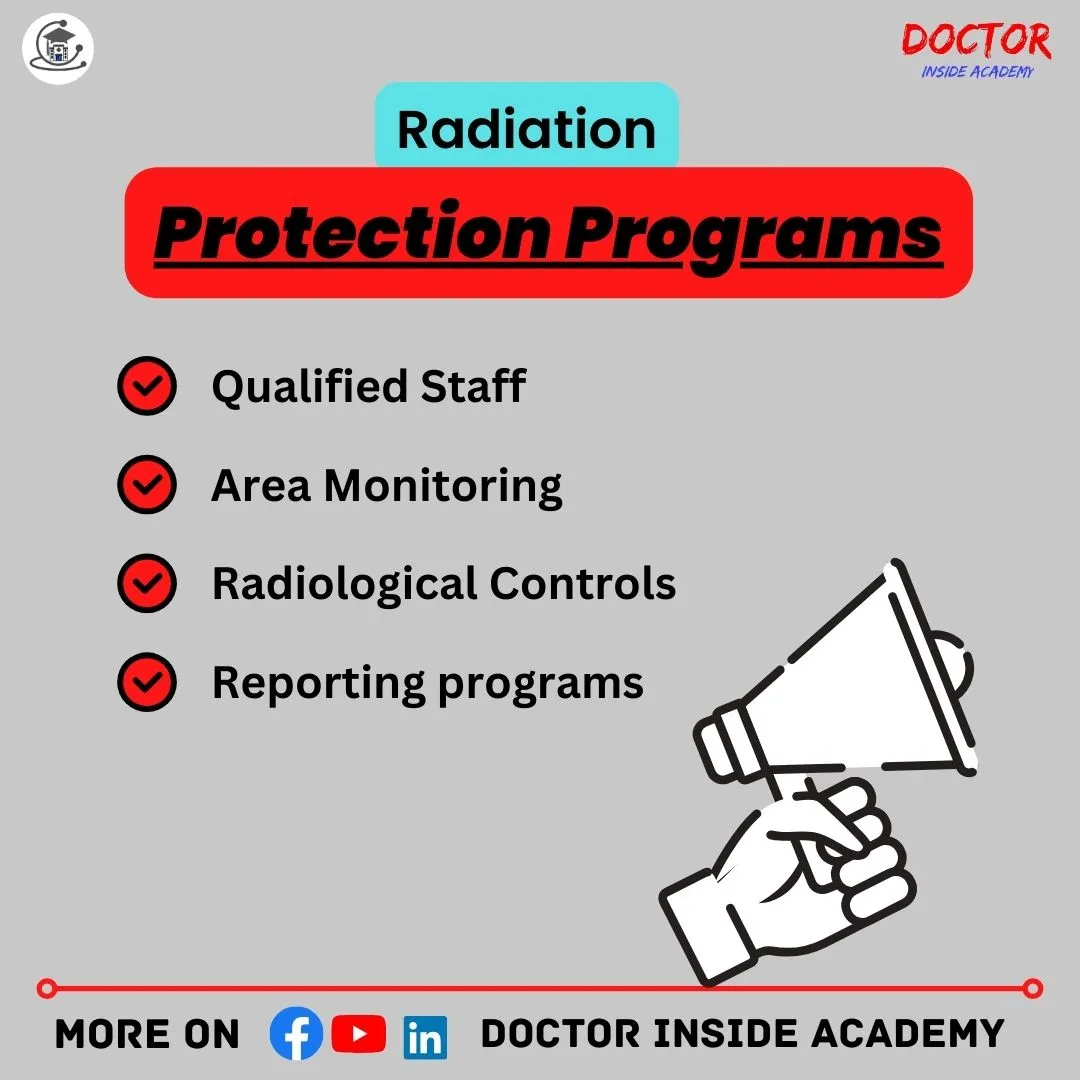Radiation is a form of energy that can travel through space or any medium and will be absorbed by the other body also. It is classified based on its effects are ionizing and non-ionizing radiation. Ionizing radiation includes x rays, gamma rays, cosmic rays, etc. and non-ionizing radiation includes visible light, ultraviolet rays, microwaves, etc.
A concept called radiation protection is introduced to prevent these ionizing radiation risks and hazards. So, in this chapter, we are going to understand what radiation protection is, a few radiation protection principles, and three basic factors of radiation protection, with radiation protection devices and programs.
Let’s Start Now:
What is Radiation Protection?
Radiation protection is the concept of protecting anyone from radiation exposure directly or indirectly. To minimize its radiation hazards or risks like cancer, or any genital effects.
It includes protecting patients, workers, staff, public from radiation hazards by following all rules and regulations by the radiation protection bodies.

There is always a question about radiation safety, the main aim of radiation protection is to minimize unwanted radiation exposure, especially for the radiology department.
Radiation Protection Principles
Ionizing radiation is used most commonly in many industries, for energy production, research, or in medicine, to benefit with the involvement of risk vs benefits factors.
Here the radiation duration must be limited to prevent the public or targeted area from unwanted radiation dose absorption, to avoid radiological risks or hazards.

Three main radiation protection principles are justification, optimization, and dose limitation.
Justification
Justification as a radiation protection principle is a concept of the benefits or risks of using radiation for different procedures and treatments.
Simply means, explaining the potential effects on biological tissues and their education with references to social, economic, and a few other factors.
Optimization
We and all other living organisms come in contact with natural or man-made radiation daily. This ionizing radiation can damage biological tissues easily, so, this radiation is optimized by a radiation protection principle known as ALARA, which stands for “As Low As Reasonably Achievable”.
Many radiation safety measures are used while exposing biological tissues, to minimize the potential radiological risks.
Dose Limitations
While processing any radiographic study, the radiation dose never exceeds the dose limits over acceptable ranges.
To stay within this radiation dose limits, a set of rules and relevant practices must be followed.
So, these are the three radiation protection principles, and very important in managing radiation risks or hazards.
Three Basic Factors of Radiation Protection
Radiation safety is a major concern in medical healthcare. So, preventing these harmful radiations while radiation exposure takes many safety measures and rules. Here are the three basic factors of radiation protection.
These three basic radiation protection factors, are commonly known as the “ALARA Principle”.

These are explained below:
Time
Time is the amount of time spent near a radiation source.
Reducing the exposure value reduces the time of exposure or vice-versa. Here, radiation exposure is directly proportional to the time taken.
Distance
If the distance between the source to the receptor is increased, then this will reduce the exposure range.
Here, doubling the distance, cut down the 1/4th of its original radiation exposure value.
Shielding
The use of proper shielding and radiation protection devices directly reduces the risk of direct exposure to ht biological tissues.
These x ray shielding devices are influenced by the thickness or linear attenuation coefficient of the shielding materials.
Materials like leads, steel, concrete, etc are used in x-ray shielding devices, to reduce the effect of radiation exposures.
Radiation Protection Devices
Radiation protection devices are materials; used to prevent a body from direct radiation exposure, that may cause mutation or variation or sometimes lead to cancer or any skin-related infections or diseases.
These radiation protection devices include lead apron, thyroid shielding, gonads shielding, face shielding, gloves, etc.

This radiation protection device directly reduces the effects of radiation and saves the patients, staff, or public from radiological hazards or risks.
If any department uses all these radiation protection devices regularly, are very less proline to risk hazards and get the best diagnostic results and a consistent pipeline of patients and market authority.
Radiation Protection Programs
Radiation protection programs are the concepts, procedures, or set of rules, to get protected from radiation risks or hazards.
These programs are conducted by RSO. RSO stands for “Radiation Safety Officer”.

Here are a few measures of radiation protection programs:
- Qualified staff,
- ALARA,
- Dosimetry programs,
- Area monitoring,
- Surveys,
- Radiological controls,
- Radiation emergency procedures,
- Internal auditing systems or procedures,
- Recordkeeping programs,
- Reporting programs.
These are the few radiation protection programs concerns and are very beneficial for any department, that is involved with radiation safety concerns.
Last Words
So, we just learned all basic concepts of radiation protection with their three basic radiation protection factors, and radiation protection devices and programs. As we already know radiation protection is very important because radiation is hazardous.
Disclaimer
The all above information is provided based on the author’s learning and experiences. These are only for educational purposes.
If you are going to use our content, then proper citation and attribution are mandatory.
You can also get permission from our writer’s team, before using any piece of content from “Doctor Inside Academy”.
FAQ
How are Patients Protected From Radiation?
Patients are protected from radiation through precision treatment planning, positioning and immobilization, continuous monitoring, and comprehensive education about the treatment process with the use of radiation protection devices.
Lead Aprons for Radiation Protection
Lead aprons are used in medical institutions to safeguard personnel and patients from excessive x-ray radiation exposure during diagnostic radiology procedures. A lead (or lead equivalent) apron is a protective garment used to screen the body from dangerous radiation, typically in the context of medical imaging.
What is radiation protection in radiology?
Radiation protection is based on three principles: justification, optimization, and dosage limitation. Justification is recognizing the advantages and hazards of utilizing radiation for surgeries or treatments.





